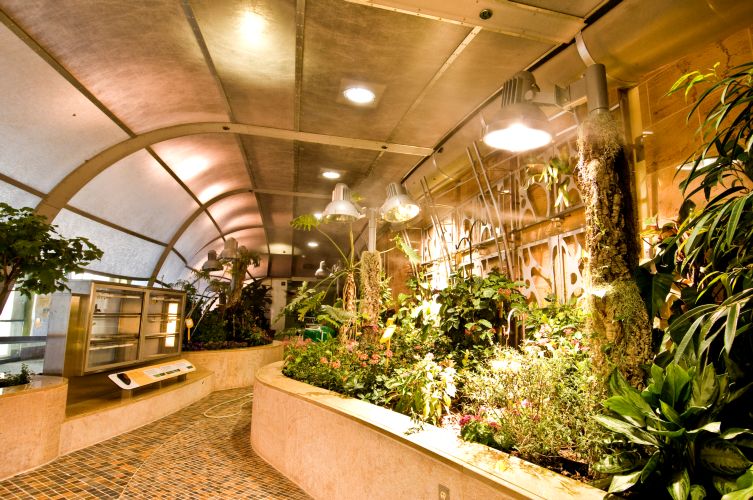Smithsonian Butterfly House


This new self-contained butterfly house was built on the existing fourth floor of the Smithsonian Institution’s National Museum of Natural History. It provides a simulated natural environment through which visitors can walk and experience, without barriers, numerous live, exotic butterfly species. There is even a pupator that provides visitors the chance to see new butterflies emerge from their cocoons.
The exhibit incorporates entrance and exit vestibules that create an air-lock effect to contain the butterflies within the exhibit. The curved semi-opaque Plexiglas exterior walls of the exhibit allow ample natural light to filter in from the museum’s adjacent exterior windows. The “greenhouse” style walls also incorporate two clear observation panels that allow visitors to view the exhibit without having to enter and pay the $5 fee.
The micro-climate necessary to support the various life forms in the Butterfly House incorporates precise temperature and humidity controls. One feature of the climate control system is a series of mist nozzles built into the walls of the structure. The high level of humidity and moisture provided by these mist nozzles necessitate the use of a geomembrane liner to contain that moisture within the structure and prevent it from potentially harming anything outside of it.
Hallaton Environmental Linings installed a 45 mil reinforced polypropylene geomembrane, which was specified by the engineer as a containment system and liquid barrier for the Butterfly House’s planter and flooring system.
Hallaton’s critical work of furnishing and installing the liner system included wedge and /or hot air welding all seams, attaching the liner to various structures, and performing field testing and quality control. Upon completion of the installation, the liner system was completely flooded as a final test for any previously undetected leaks.
The lined floor received 4” of concrete with a final mortar and tile surface. The lined planter walls received a rock facing treatment, and the interiors were covered with various natural materials such as moss, lava rock and plantings to create a natural environment for the butterflies.
The exhibit’s curved walls and curved planter structures provided challenges in the installation process for Hallaton as they cut and seamed rectangular, rolled geomembrane to fit as tightly as possible and with as little seaming as possible. The lining system successfully protects the lower levels of the museum beneath the new Butterfly House.
Hallaton’s president, Todd Harman, said, “We are honored to be given the opportunity to perform on such a challenging and high-profile project as the Enlarged Butterfly House. With its difficult technical demands and sensitive quality control requirements, it is the type of project that we are well-suited to accomplish.” Mr. Harman added, “The Enlarged Butterfly House project is very similar to the lining of a landfill or a petroleum tank farm, but instead of protecting groundwater from contamination, we are protecting the nation’s treasures from potential water damage.”
The Enlarged Butterfly House construction team included contractors such as Facchina Construction Co., which Hallaton has worked with on past projects, such as the BWI Airport Expansion. Mr. Harman noted, “Hallaton was awarded the subcontract in part because of our strong relationships and our reputation for performing high-quality, professional liner installations, on-time and on-budget.”